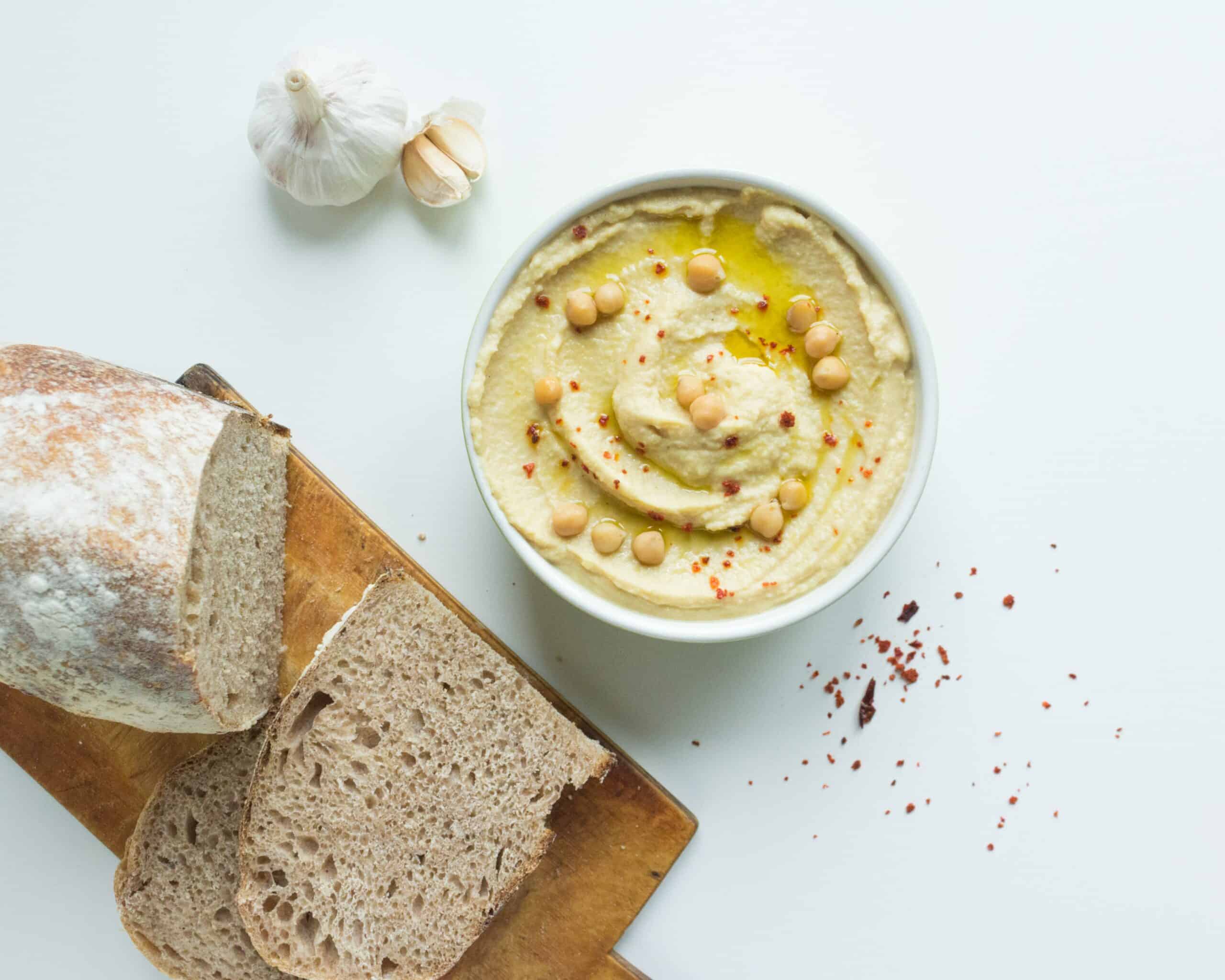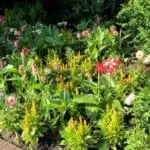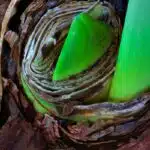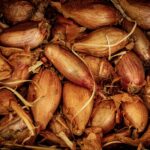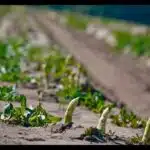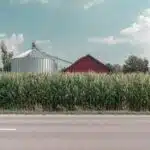The tangy flavor of garlic, used to enhance the taste of countless dishes, is a beloved ingredient in many kitchens. But did you know that growing garlic yourself can be surprisingly easy? With just a few simple steps, you can have fresh garlic ready for your meals in no time.
Garlic is an amazing vegetable: full of healthy antioxidants and vitamins, it’s one of the most versatile and nutritious ingredients available. Whether you’re a beginner gardener or an experienced green-thumbed pro, learning how to grow garlic can open up a world of flavors that can easily be added to your cooking!
Ready to get started? Let’s explore the surprisingly simple process of growing garlic – from planting the cloves to harvesting the bulbs – so you can fill your garden with deliciousness!
Selecting Garlic Varieties
When it comes to growing garlic, the type of variety you choose is a key factor. There are two major types: hardneck and softneck garlic. Hardneck varieties tend to have larger cloves and a stronger flavor, while softneck varieties are easier to braid and tend to store longer. It’s also important to note that some varieties do better in certain climates than others, so be sure to research what will work best for your region before planting.
When selecting which garlic variety to grow, consider how you plan on using the end product. Are you looking for something flavorful for your recipes or something decorative for braiding? Knowing how you want to use the garlic can help narrow down your selection. Additionally, if you’re a beginner gardener, look for varieties labeled as “easy-to-grow” or “beginner-friendly” – these are usually more forgiving when it comes to climate and soil conditions.
Once you’ve chosen the variety of garlic that works best for your needs and climate, it’s time to start preparing the soil for planting.
Preparing The Soil For Planting
Have you ever considered growing garlic? It’s a great way to add a unique flavor to your favorite dishes, but how do you go about it? The second step in growing garlic is preparing the soil for planting.
To ensure proper growth of your garlic plants, it’s important that you prepare the soil correctly. Loosen the soil to a depth of 10-12 inches and mix in aged compost or manure to enrich it. You should also test the pH level; ideal levels are between 6.0–7.0 for most garlic varieties. And finally, make sure your soil is free from weeds before planting by pulling them out or using an organic herbicide like vinegar or lemon juice solution.
When prepping your soil for planting, keep in mind that garlic requires a lot of sunlight and good drainage, so be sure to pick a sunny spot with well-drained soil. With these tips in mind, you’re now ready to start planting garlic!
Planting Garlic
Planting garlic is a rewarding experience that requires some preparation. To get started, select healthy bulbs with tight paper-like skin and no signs of mold or soft spots. Break the bulbs apart into individual cloves, being sure to keep the ones with the most root buds attached. Plant each clove around three inches deep and four inches away from each other in a well-drained area of light soil. Afterward, cover them with soil and press down lightly.
It’s important to note that two types of garlic can be planted: hardneck and soft neck varieties. Hardneck are best planted in colder climates as they require a period of cold temperatures to fully mature their bulbs while softneck varieties do not need such cold temperatures but are better suited for warmer climates. Additionally, some varieties don’t need to go through a full dormancy period as they can be grown year-round in areas with mild winters.
When planting your garlic, it’s essential to choose the right variety for your specific climate so you can ensure successful growth and harvesting. With an understanding of these requirements and sufficient soil preparation, you’ll have all the tools needed for a great harvest! Now it’s time to provide your garlic the water it needs for healthy growth.
Watering Garlic
Once you have planted your garlic, it’s time to move on to the next step: watering. If your soil is naturally moist or if you live in an area with regular rainfall, then you won’t need to worry about watering too much. However, if you’re growing garlic in a dry climate, it’s important to give your plants a good soak every week or two. When watering, make sure to drench the soil around the plants so that water penetrates several inches deep. This will help the roots grow and reach down into the ground for moisture.
It’s also important to avoid over-watering garlic because it can lead to rotting and fungal diseases. You don’t want your garlic bulbs becoming waterlogged as this can cause them to rot and die prematurely. Instead, focus on providing adequate moisture so that your plants stay healthy and strong throughout their growing season.
With proper watering, your garlic plants should thrive and produce ample bulbs come harvest time! So don’t forget to keep them hydrated as they are growing – it’ll pay off in the end! And now that we’ve discussed watering garlic, let’s talk about feeding them for optimal growth.
Feeding Garlic
Picture this: you’re standing in your garden, admiring the vibrant garlic plants growing tall and strong, with bright green leaves waving in the breeze. You’ve successfully grown garlic in your garden, and now it’s time to take the next step – feeding your garlic.
Feeding your garlic is an important part of keeping it healthy and helping it reach its full potential. The best way to feed your garlic is to add a slow-release fertilizer around the base of each plant every few weeks during its growth period. This will help provide essential nutrients that support root development and leaf growth so that your garlic can thrive. You should also add some compost or aged manure as a top dressing for added nutrition.
Keep an eye on your garlic’s progress throughout the season, and make sure to adjust the amount of fertilizer accordingly. Too much can cause an imbalance of nutrients, leading to weak stalks or dry leaves – not what any gardener wants! With the right balance of fertilizer and regular watering, you’ll be sure to have a successful harvest come fall.
Mulching Garlic
Oh, mulching garlic! Is there any greater joy in life? The thought of that fragrant herb nestled up against a soft layer of organic material just warms the heart. A truly sublime experience!
But what is mulching and why do it? In essence, it’s a technique used to protect the garlic from the ravages of weeds, pests, and fluctuating temperatures. By covering the soil around the plants with natural materials like leaves, straw, or bark chips, you can keep your precious crop safe and healthy.
You don’t need to go overboard with the mulch either – a few inches should do the trick. Plus, it will help retain moisture and improve drainage so your garlic can thrive in its optimal environment. So why wait any longer? Get out there and start mulching!
Common Problems And Solutions
Many gardeners are surprised to learn that growing garlic can have its own set of challenges. According to a survey done by the National Gardening Association, over 40% of gardeners have experienced issues with their garlic crops at least once. As such, it is important to be familiar with common problems and solutions when it comes to growing garlic.
One common issue is that garlic may not form healthy bulbs if planted too late in the season. If this occurs, it’s best to try planting your cloves earlier in the season next year so they can take advantage of more daylight hours and more favorable temperatures. Additionally, if your crop experiences any fungal diseases, such as white rot or downy mildew, it’s best to remove affected plants from the garden and use fungicides as needed.
In addition to fungal diseases, insect pests can also affect your garlic crop. To prevent pests from affecting bulb size and quality, you’ll want to keep an eye out for aphids, whiteflies, thrips and other pest-related issues throughout the growing season. The best way to do this is through regular monitoring and scouting of your plants so you can identify any potential issues quickly and treat them accordingly.
Controlling Pests
Pests are a common problem for gardeners, and garlic is no exception. White rot, onion thrips, root maggots, and other critters can quickly ruin a crop if not managed properly. Fortunately, there are several steps that can be taken to help prevent pests from invading the garden.
One of the best ways to control pests is through the use of mulch. A thick layer of mulch around the garlic plants can help deter insects from accessing the soil and laying eggs near the roots. Additionally, using companion planting techniques with vegetables such as onions or peppers can also help reduce pest levels in the garden.
Finally, certain natural predators like ladybugs and spiders can be introduced into the garden to help keep pest populations down without resorting to chemical treatments. Keeping a vigilant eye on the garlic crop and taking action as soon as pests are spotted will go a long way towards keeping them away from your precious plants. With these strategies in place, you’ll be well on your way to harvesting a bountiful crop of tasty garlic!
Harvesting Garlic
When the time comes to harvest your garlic, it’s important to do so at the right time. The leaves will begin to yellow and fall over, signaling that the garlic is ready to be pulled. To ensure you get the most out of your crop, only pull up those bulbs that are completely mature. It’s also important to check for any symptoms of disease or pests before harvesting, as this could affect the flavor and storage life of the garlic.
Harvesting your garlic can be done using a garden fork or spade, but it’s important to take care not damage any of the bulbs as you dig them up. Once they’re out of the ground, brush away any dirt from each bulb and then cut off their stems about an inch above their head. Leave them in a dry place with plenty of air circulation until all the leaves have begun to dry out and become papery.
Once your bulbs are fully dried out, it’s time for curing! This process helps preserve their flavor and texture and ensures they’ll last longer when stored properly.
Curing Garlic
Once you’ve harvested your garlic, the next step is curing it. Curing garlic helps to ensure that it retains its flavor, extends its shelf life, and makes it easier to peel. The process is simple yet important; it’s what turns the garlic from a fresh harvest into a product that can be stored for months.
To cure garlic, hang the bulbs in a dry and airy location such as a shed or garage. Allow them to stay there for about two weeks or until the stems dry out completely and turn brown. Once this happens, you can cut off the stems and store your garlic in mesh bags or braids. During curing, make sure to check on them every few days and remove any damaged cloves so they don’t spoil the surrounding bulbs.
Storing garlic correctly will help keep it safe from mold and other contaminants while keeping its flavor intact. Ideally, you should store your cured garlic at room temperature in a dark location such as a cupboard or pantry. Be sure to keep the area well-ventilated to prevent moisture buildup that could lead to mold growth. With proper care, you can enjoy your freshly-harvested garlic for months afterwards! Moving forward, taking care of your stored garlic will help ensure that it lasts as long as possible.
Storing Garlic
Once you’ve harvested and cured your garlic, it’s time to store it. Storing garlic correctly will ensure that you can enjoy its flavor for months to come. You’ll want to find a cool and dry location to store your bulbs. It should be dark, as garlic is sensitive to light and can become bitter if exposed to too much of it. If humidity is too high, the cloves may sprout prematurely. To store your garlic, you should hang it in mesh bags or put the bulbs in paper sacks that have been punched with holes for ventilation.
Store the bulbs in a single layer so they don’t touch each other; this will help prevent rot. Additionally, make sure to check on your stored garlic every couple of weeks and discard any bulbs that show signs of mold or rot — this will help keep the rest of your garlic from spoiling as well.
Keeping your garlic properly stored means that you can enjoy its flavor for months on end! With proper storage techniques, you can ensure that your crop is ready whenever you need it. Now that we’ve discussed how to store garlic, let’s take a look at companion planting considerations for growing garlic successfully.
Companion Planting Considerations
When it comes to companion planting considerations for garlic, it’s important to be mindful of what plants you put in the same bed. For example, garlic grows best when planted around tomatoes, peppers and eggplants because they help deter pests that could damage the crop. On the other hand, some plants can inhibit garlic growth; beans, peas and strawberries should not be planted near it. Additionally, cabbage family crops such as broccoli or cauliflower should also be avoided.
In addition to other plants, make sure to give your garlic enough space when you’re planting. Garlic needs plenty of room between cloves so that they can grow freely without being crowded. Cramming cloves too close together will result in a subpar harvest since the bulbs won’t have enough room to fully mature.
Finally, adding organic matter such as compost to the soil is beneficial for helping your garlic thrive. Organic matter helps with water retention and provides more nutrients for the plant; this will give you bigger bulbs with more flavor at harvest time!
Using Garlic In The Kitchen
Deliciously delightful and delectable – garlic is a favorite flavor for many. It’s not just a seasoning, however; garlic has many uses in the kitchen as well. From adding zest to stir-fries to spicing up soups and sauces, there are numerous ways to use this versatile veggie. Let’s explore how to make the most of garlic in the kitchen.
Adding garlic into a dish is easy and can instantly elevate the flavor of any meal. Roasting cloves brings out the natural sweetness, while sautéing it brings out its rich nutty flavor. It can also be added raw to salads or sandwiches for an extra punch of flavor. For more of a kick, try using a mortar and pestle to create a garlic paste that can be used as a flavorful base for sauces or marinades.
When cooking with garlic, it’s important to remember that timing is key! For milder flavors, add garlic early during the cooking process so that it has time to mellow out. However, if you want intense garlic taste, add it near the end of cooking or sprinkle some fresh chopped cloves on top at serving time for an aromatic finish.
No matter how you use it in your recipes, adding garlic is sure to bring plenty of pungent pleasure!
Garlic Uses In Medicine
Investigating the long-held theory that garlic has medicinal benefits, it is not far-fetched to say that people have been using garlic for everything from coughs and colds to skin infections since the dawn of time. In fact, studies have found that garlic does contain certain compounds that can help fight off common illnesses and even lower blood pressure.
This brings us to the current H2 – garlic uses in medicine. Studies have shown that consuming garlic regularly can help reduce the risk of several types of cancer and heart disease, as well as alleviate respiratory issues like asthma. It has also been used to treat fungal infections such as athlete’s foot, ringworm, and jock itch. Additionally, its antifungal properties make it an effective remedy for treating yeast infections.
Furthermore, garlic is often used in homeopathic treatments due to its anti-inflammatory effects and immune system boosting capabilities. It can also be applied topically as a natural remedy for cuts and bruises or taken orally to address issues such as high cholesterol or high blood pressure. With so many different uses in both traditional and alternative medicines, it is no surprise why garlic has remained a widely used healing agent throughout the centuries. Looking ahead then, let us explore how to replant garlic cloves for continued use in the future.
Replanting Garlic Cloves
The pungent aroma of garlic used to bring forth memories of Italian dishes and home cooking. Yet, what if you could take this same spice and use it for something more than just a flavor enhancer? Replanting garlic cloves is an easy way to expand your garlic crop, creating an abundance of the potent herb.
Rather than buying pre-packaged garlic from the store, you can grow your own! To get started, simply break apart a head of garlic into individual cloves. Plant each clove roughly two inches into the soil with its flat end facing down and its pointed end facing up. Make sure that they are spaced at least four inches apart. Once planted, water them regularly and keep them in a spot that gets plenty of sunlight throughout the day.
In no time at all, you will have a thriving crop of robust garlic ready to be harvested! The cloves will be bigger than when they were originally planted, giving you a larger yield than before. Plus, you can now have fresh garlic whenever you please, cutting out trips to the grocery store. Garlic isn’t just for cooking anymore; it’s for gardening too!
Frequently Asked Questions
How Long Does It Take For Garlic To Grow?
It’s widely accepted that garlic takes months to grow, but can you really expect a full yield in such a short time frame? To find out, we looked into the research and discovered that growing garlic is not as straightforward as it seems.
Garlic requires an optimum soil temperature of around 60°F (15°C) for germination. This means that if you plant your cloves in the springtime, you may see sprouts within two to three weeks. However, this is followed by a period of slow growth until the temperature rises further and the garlic starts producing bulbs. On average, it takes around four to six months for the bulbs to mature – though this can vary depending on variety and climate.
So while it’s possible for your garlic crop to be ready in under six months, don’t be surprised if it takes longer. With adequate care and attention throughout the growing season – including plenty of water, sunlight and fertilizer – your patience will eventually pay off with a bumper crop of delicious homegrown garlic!
What Is The Best Time Of Year To Plant Garlic?
Planting garlic at the right time of year is a critical step in growing a successful harvest. But when is the best time to plant this pungent bulb? There are a few key factors to consider when deciding when to put your garlic in the ground.
The first factor to consider is where you live. Depending on your location, the ideal planting time could be as early as late fall or mid-winter. In colder climates, planting late allows for more exposure to cold temperatures which can help with bulb formation. On the other hand, if you’re living in a warmer climate then fall would be a better time for planting since garlic needs cooler temperatures and soil to grow properly.
Another critical factor is ensuring that your soil has enough moisture for the garlic to survive until harvest season. If your area receives ample rainfall throughout the winter months then it’s beneficial to wait until fall or winter for planting; however, if there’s less rainfall then it’s best to plant earlier in order for the bulbs to get enough moisture before temperatures become too hot.
Whether you’re thinking of planting now or waiting until later in the year, it’s important to do your research first and make sure that you’ve chosen the right conditions for optimal growth and yield of delicious garlic cloves!
How Much Space Should Be Left Between Each Garlic Clove?
Planting garlic is a great way to get fresh produce at home. It’s an easy plant to grow and maintain, with the right knowledge. But one of the key questions for anyone looking to grow garlic is how much space should be left between each garlic clove?
When planting garlic, it’s important to remember that spacing affects the size of your harvest. Cloves planted too close together will fight for resources, leading to smaller bulbs. On the other hand, too much space between them can lead to individual cloves becoming too large and splitting apart into multiple cloves when harvested.
The best way to determine the right amount of space is by looking at a mature bulb of garlic and measuring out similar distances between each new clove you plant. For example, if a mature bulb is 2 inches wide, then you can aim for 2 inches between cloves when planting. This ensures that your harvest will yield good-sized bulbs without overcrowding or wasting valuable garden space.
What Is The Best Soil Type For Growing Garlic?
The lush aroma of garlic wafting through the air is one of nature’s simple pleasures. Growing garlic yourself is an easy task and can be a great way to bring the goodness of this herb into your home. But before planting, it’s important to know what soil type is best for growing garlic.
Soil with rich organic material, such as compost or manure, is ideal for garlic. The soil should also be well-draining yet still retain moisture. In addition, ensuring the soil pH level is between 6 and 7 will help keep the garlic healthy during its growth period. Similarly, adding a layer of mulch around the plants after planting can help keep moisture in and weeds out.
Knowing which soil type to use when growing garlic can make all the difference in terms of yield and quality of your crop. With a bit of research, you’ll soon find yourself on your way to harvesting plump bulbs full of flavor!
How Can I Tell When Garlic Is Ready To Be Harvested?
It is estimated that garlic is one of the easiest vegetables to grow in gardens and containers. Whether you are a beginner or an experienced gardener, you can have success growing garlic. Knowing when garlic is ready to harvest is the key for successful cultivation.
When the leaves of your garlic plants begin to turn brown at the bottom, this means that your garlic bulbs are ready to be harvested. During harvesting, use a garden fork or shovel to dig up your bulbs carefully. Avoid pulling them out by their stems as they might break away from the bulb, leaving it exposed and vulnerable to pests and diseases. If all of your plants’ leaves have died back, then it’s time to get harvesting!
Garlic plants take anywhere between four and nine months to mature depending on the variety planted. To ensure a plentiful harvest year after year, it’s important that you allow enough time for each plant’s entire life cycle-from planting through harvesting-to run its course before removing them from the ground. Once harvested, hang your garlic in a warm dry place for about two weeks so that it can cure properly before using or storing it for extended periods of time.
Harvesting garlic at the right time will ensure that you get maximum flavor out of each bulb and can enjoy homegrown garlic year round!
Conclusion
Garlic is a nutritious and delicious addition to many dishes and it can be grown easily in most climates. Although growing garlic may seem intimidating, the process is relatively simple and the results are worth the effort. With a little patience and knowledge, you can be harvesting garlic in no time!
The best time of year to plant garlic is usually early autumn. Make sure the soil has good drainage, as garlic does not tolerate soggy conditions. Plant each clove with enough space between them – about four inches should do – then cover with soil and water regularly. Depending on your climate and variety, it will take anywhere from six months to two years for the bulbs to mature enough for harvest.
When you notice the lower leaves of your plants beginning to yellow, that’s a sign that it’s time to harvest your garlic. Pull up each bulb carefully by its stem and lay out in a sunny spot to dry out for several days until the outer papery layer turns brown like parchment paper – an anachronism perfect for reminiscing about times past. Trim off any excess roots, store in a cool place away from direct sunlight, and enjoy!

